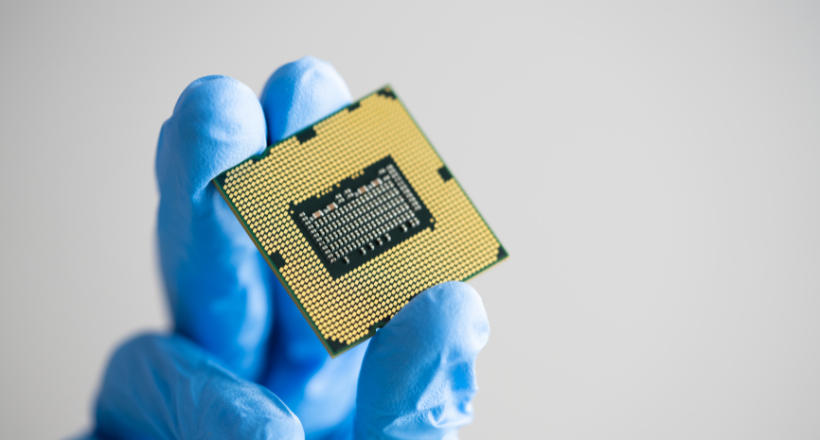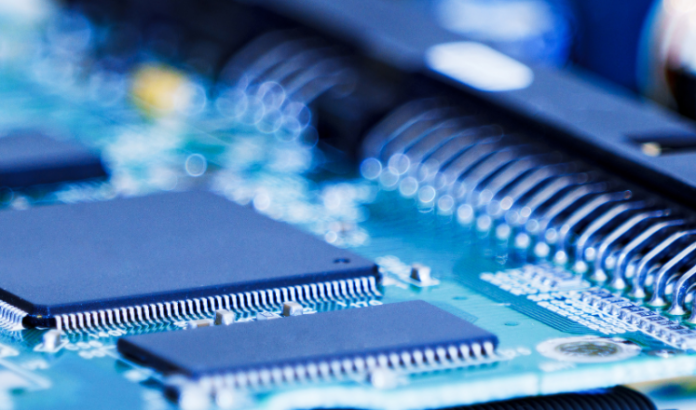This blog post is the third in a series that discusses intellectual property (IP) opportunities for high-tech businesses looking to innovate in the competitive semiconductor industry.
Semiconductors enjoy a wide range of uses across many industries. Thanks to rising global demand, businesses in the semiconductor industry have ample opportunities for growth and innovation. The industry saw US$627 billion in global sales in 2024 alone; meanwhile, Deloitte projects that the industry could potentially hit US$1 trillion in 2030.
Businesses will need to understand market trends in order to maintain their competitive advantage — which is where this blog series comes in. Previously, we had discussed the current patent landscape, as well as the common business models for semiconductor companies. Now, we’ll dive deep into the technological trends and industry challenges driving semiconductor demand today, and also examine smart strategies for protecting semiconductor-related IP.
Current trends in semiconductor technology by market segment
Although semiconductor demand is generally expected to increase over the next few years, its growth will be largely driven by certain market segments, especially newer technologies such as artificial intelligence (AI). By contrast, more mature segments, like smartphones, are expected to be stagnant.
Let’s take a closer look at the market trends for some of the most common applications of semiconductor technology.
Artificial intelligence
Globally, the market for AI is thriving; one source estimates its 2025 value to be a whopping US$757.58 billion.
As worldwide demand for AI surges, so will demand for semiconductor design and production. This is because AI applications involve massive amounts of computational data and therefore must be run on chips that can perform parallel processing, such as graphics processing units (GPUs).
Indeed, for 2025, KPMG has identified AI as the most important application driving semiconductor revenue, and has also ranked microprocessors (including GPUs) as the top product opportunity for industry growth.
It’s worth noting the explosive growth for generative AI (or gen AI) in particular. In a nutshell, gen AI produces content based on patterns and structures learned from input data; recognizable examples include ChatGPT and Google’s AI Overviews. The market for gen AI is expected to grow at a remarkable CAGR of 44.20% between 2025 and 2034.
Currently, Nvidia is the global market leader for AI-related chips, thanks to its first-mover advantage in manufacturing GPUs. This specialization has enabled the company’s market capitalization to surpass US$3 trillion — making it the second-largest publicly traded U.S. company.
Enterprise edge
Edge computing refers to a model that brings computation and information storage closer to the sources of the data, in order to rapidly process large volumes of data at or near the sources of the data and reduce the amount of data processed centrally.
As edge computing requires localized processing, semiconductors are essential for enabling higher speed, efficiency, and security.
Although cloud computing will continue to retain a significant market share, Deloitte expects many businesses worldwide to also invest in enterprise edge by adding AI data-center infrastructure on-premises. This will serve three purposes: to protect their IP, comply with regulations, and save money. As such, there are clear opportunities for the semiconductor market to grow via the edge computing segment.
Internet of Things
In the simplest terms, the Internet of Things (IoT) refers to a network of interconnected wireless devices. Common examples of IoT devices today include smart home appliances and wearable technology.
All IoT devices contain semiconductors; the contributions by the device’s sensors, integrated circuits, and microprocessors include:
- Collecting data from the environment
- Interpreting data and executing programmed actions based on that data
- Facilitating communication between IoT devices and other devices in the network
- Safeguarding and encrypting sensitive data
In recent years especially, market demand for IoT devices has surged across all sectors. Precedence Research has valued the market at US$76.97 billion in 2025, and further forecasts it to reach US$356.23 billion by 2034 — growing at a CAGR of 18.56% from 2025 to 2034.
To capitalize on this market demand, semiconductor companies may focus on chip innovations that improve upon power efficiency, size, form factor, and cost effectiveness.

Automotive
As vehicle technology becomes more complex, contemporary vehicles are being built with a higher share of semiconductor chips — especially as electric vehicles (EVs) rise in popularity:
- On average, internal combustion engine (ICE) vehicles may contain about 300-1,000 semiconductor chips, while newer EVs may contain up to 3,000.
- March 2025 saw global sales of EVs rise 29% year-on-year, fueled in particular by high growth in Europe and China.
Although the industry outlook is net positive, automotive has nonetheless fallen in its importance as a revenue driver for the semiconductor industry. According to KPMG, automotive — which topped their rankings as a revenue driver in 2023 and 2024 — has fallen to fourth place for 2025. Put another way, semiconductor sales for automotive will see growth, but likely at a slower rate than before.
5G/6G
Semiconductors are essential to driving advances in cellular data technology. 5G networks are currently the most efficient mainstream option, but the industry is anticipating an eventual leap to 6G, which promises faster speeds, lower latency, and greater capacity, including AI and machine learning integration. One source estimates the 6G market to grow at a whopping CAGR of 76.9% from 2030 to 2035!
Smartphones
Once a leading revenue driver in the semiconductor industry, smartphones are now expected to see relatively stagnant growth in 2025.
Although the smartphone market did see over a billion units in annual sales, and gen AI now features in a plurality of smartphone models, the semiconductor chips used in these phones are estimated to be worth much less. Indeed, consumers have lengthened their replacement cycle out of a lack of enthusiasm for the cost and features of newer smartphone models.
With the smartphone market leveling off, the semiconductor industry will be turning to newer innovations as the key drivers of its growth.

LEO satellites
Due to their proximity to Earth, low Earth orbit (LEO) satellites offer lower latency, more stable connectivity, and greater cost effectiveness to produce. Thanks to their broad commercial applications, LEO satellites are attracting industry interest; the number of LEO satellites in space is projected to increase from 7,473 in 2023 to about 42,600 by 2032, with SpaceX and Starlink paving the way as leading innovators for the technology.
LEO satellites operate in challenging environments with high radiation, extreme temperatures, and limited sources of reliable power. As such, companies working on LEO satellites will need to develop semiconductor technology that can tolerate radiation while efficiently managing and converting power.
Robotics
Semiconductors are critical for all major robotics processes. From their brains (e.g., CPUs, AI chips) to their senses (e.g., CMOS, MEMS) and muscles (e.g., motor drivers), robots simply would not exist without semiconductors. The development of more sophisticated robotics is therefore tied to the development of more advanced semiconductor chips.
Quantum computing
In a nutshell, quantum computing has the potential to perform certain tasks — for example, cybersecurity or AI/machine learning — more efficiently than traditional computers, which is why it’s captured industry interest. (If you’re curious to dive deeper into the topic, we’ve written more about quantum computing and why it matters.)
Although the field is still relatively nascent, it already poses several opportunities and challenges for the semiconductor industry. On one hand, quantum computers require specialized quantum chips and related hardware; companies with advanced semiconductor technology could play a critical role in making efficient and scalable quantum chips. On the other hand, existing semiconductor technology will face significant physical and technical challenges in adapting to the needs of quantum computing, such as miniaturization and heat dissipation.
Using patents to protect intellectual property in the semiconductor industry
The semiconductor industry is highly saturated and capital-intensive, meaning that businesses need to make robust IP protections a top priority. In particular, patents — which allow the patent holder to exclude others from exploiting their technology — will be invaluable business tools to help maintain a competitive edge.
This sentiment is reflected in global patenting activity within the industry. According to Mathis & Squire, global semiconductor patent filings have increased 22%, from 66,416 in 2022/23 to 80,892 in 2023/24.
Patents offer businesses several material benefits, including:
- Securing market share: Patents may help reduce industry competition, as competitors who develop a similar product might now risk infringing the patent.
- Providing fundraising opportunities: Patents may provide investors with some objective assurance that the technology is novel and cannot be copied.
- Accessing competitors’ technology through cross-licensing: In such a saturated industry, patents can offer businesses more opportunities to collaborate (as this is usually preferable to undergoing a costly litigation process), which can help both businesses further advance their technologies.
Given the fast-paced nature of the semiconductor industry, businesses will want to consider implementing the following strategies as part of their filing approach:
- Filing early: Quite simply, you want to beat your competitors to the punch. In a crowded field like semiconductors, it’s possible that another business may be independently developing similar technology at the same time — and the company that files first gets priority.
- Filing broad claims: While it’s also essential to have narrower dependent claims (as this can help with navigating unexpected prior art), securing broader claims can serve as a defensive tactic to block the competition from using similar technology with minor modifications.
- Incorporating geographic considerations: The semiconductor industry is global, which means that an international patent strategy can help ensure comprehensive IP protection. That said, businesses will want to plan ahead: patent rights are territorial, and each jurisdiction imposes limited timelines and strict procedures to file.
- Addressing the patent thicket: Given the size of the semiconductor industry and the number of patents that already exist, applicants will likely find themselves navigating a patent thicket, where multiple parties own a plethora of patents covering the smallest variations on the same concept. In the worst-case scenario, a firm may end up spending more resources on costly litigation than on innovation or business growth. To address this, firms will want to employ strategies like conducting comprehensive patent landscape studies and collaborating with other industry players (e.g., patent pooling, cross-licensing, and open sourcing).
Challenges facing the semiconductor industry
Clearly, there are plenty of growth opportunities for businesses innovating in the semiconductor market. That said, new entrants should also be aware of several industry-wide challenges.
High fabrication costs
As chip components get smaller and more complicated over time, the cost of fabricating them has increased. In addition, the process calls for sophisticated manufacturing infrastructure, which is a barrier to entry for most smaller companies.
In our previous post in this series, we discussed how the fabless model has enabled smaller companies to enter the market by outsourcing their fabrication needs to established foundries. However, there are risks to outsourcing too — for example, creating supply-side vulnerabilities (which we’ll expand on below) and overreliance on third parties.

Attracting and retaining skilled talent
Chip design, fabrication, assembly, and testing all require engineers, scientists, and technicians with the right skill sets to take the helm. However, the industry currently faces a talent shortage. Forbes estimates that, by 2030, the semiconductor industry will need to add 1 million skilled workers while also retaining its current workforce in order to meet global demand.
Several factors have contributed to this talent shortfall, including:
- Increased competition for a limited pool of qualified workers
- Low industry appeal for newer talent, who prefer more dynamic technological fields
- An aging workforce, which is causing the industry to lose valuable experience as professionals retire before their knowledge can be passed on
- Salary concerns, where workers’ desired compensation levels are not compatible with operating costs
To stay competitive, semiconductor companies will need to invest in workforce development incentives and initiatives — for example, by crafting stable employment opportunities to entice younger talent to join the workforce, and offering upskilling and reskilling programs to help bridge any workforce gaps.
Building resilient supply chains
The semiconductor production chain is vulnerable to several supply-side challenges.
For one, the raw materials required for fabrication are often in limited supply. This can happen for geopolitical reasons; for example, about half of the world’s supply of neon gas comes from Ukraine, but ongoing conflict has interrupted that supply. It can also happen due to extreme weather; for example, in 2024, Hurricane Helene briefly shut down two North Carolina mines that were essential sources for high-quality quartz.
For another, geopolitical tensions can impact other parts of the production chain. Export restrictions and tariffs could complicate existing supply chains by shifting costs and profits, which would in turn impact how companies approach R&D and manufacturing.
Due to the cost and complexity of manufacturing infrastructure, increasing the resiliency of the semiconductor supply chain will be possible only in the long run. In the short run, the industry may be vulnerable to supply chain disruptions, and new entrants to the market should prepare accordingly.
Navigating the semiconductor industry: Finding the right legal partnership
Although buoyed by rapid innovation, strong demand, and fierce competition, the semiconductor industry is nonetheless facing potential disruptions in the months to come. Companies innovating in the semiconductor space will want to take proactive measures to safeguard their competitive advantage.
In particular, we recommend partnering with a qualified patent attorney to help maximize the value of your IP assets. At Henry Patent Law Firm, we’ve helped companies of all sizes develop smart patent strategies to meet their business goals. Please feel free to contact us to learn more.

Ke Sun, Ph.D.
Ke Sun, Ph.D., is a registered patent agent. He applies his expertise to preparing and prosecuting domestic and international patent applications.

